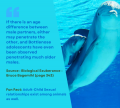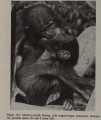One of our staff members is contributing considerably to a News Archiving service at Mu. Any well educated (Masters, PhD or above) users who wish to make comments on news sites, please contact Jim Burton directly rather than using this list, and we can work on maximising view count.
Debate Guide: Nonhuman relatives: Difference between revisions
New page: Our animal relatives do not only engage in masturbation and casual homosexual behaviours, but sexually induct their young in ways that would often be described as incestuous by human stand... |
The Admins (talk | contribs) No edit summary |
||
| (5 intermediate revisions by 3 users not shown) | |||
| Line 1: | Line 1: | ||
Our | [[Research: Intergenerational Sexual Behaviors in Animals|Our research page]] explains this potential analogy and points to sources. This article addresses how to use the analogy carefully. | ||
Our animal relatives, particularly primates engage in masturbation and casual homosexual behaviors. This much is pretty well-known, although somewhat hidden from nature documentaries and popular literature as it is considered "awkward". However, animals, particularly primates, also sexually induct their young in ways that would often be described as incestuous by human standards. Yet, no harm is done, since there is no moral shame or iatrogenesis. | |||
Of course, one could employ | Indeed, such complex but common behaviors would appear to serve an adaptive evolutionary function in these species. So, in human terms, what has been observed? Various primates engage in behaviors including: | ||
*Incestuous mating with juveniles (both sexes, sometimes for reproductive purposes). | |||
*Intense relationships involving male-juvenile male fondling. | |||
*Oral sex between younger and older males. | |||
*Fellatio to completion, including eating the semen. | |||
*Motherly baby play. | |||
*Masturbation and mounting with infants. | |||
*Child - child and child - parent faux - mountings. | |||
*Adult - pubescent lesbian relationships. | |||
*Adult male - infant female babysitting that involves masturbation and thrusting. | |||
*Adolescent anal sex (to ejaculation). | |||
*Sexualized greetings as normal interactions. | |||
*Studly, penetrative behavior in very young infant males. | |||
*Multipositional homosexual mounting and masturbation during juvenile/adolescent wrestling games. | |||
*Infant initiation of intercourse and fatherly acceptance of mother-son cunnilingus. | |||
This would seem to suggest that "primitive" human societies in which [[Research: Nonwestern Intergenerational Relationships|similar behaviors were observed]] are not an outlier. | |||
Of course, one could employ an irrelevant argument by saying that other animals can behave in savage and unethical ways (sometimes involving rape of infants). However, this is not proof of an [[Intrinsic harm|innate trauma mechanism]] underlying voluntary interactions. Indeed, as a supposedly "civilised" species, we should have the added benefit of being able to make an ethical distinction on the basis of harm. If our ethics are compatible, the behaviors are potentially compatible. | |||
==Excerpt Graphic Library== | |||
The EGL on '''Broader Perspectives''' has some relevant information. Just open the graphic, right click/save and reproduce by uploading in short-form media to bypass character limits. | |||
{{Template:EGLBP}} | |||
[[Category:Debate]][[Category:Debating Points: Sociological]][[Category:Debating Points: Minor-Attracted]][[Category:Debating Points: Adults]][[Category:Debating Points: Child/Minor]] | [[Category:Debate]][[Category:Debating Points: Sociological]][[Category:Debating Points: Minor-Attracted]][[Category:Debating Points: Adults]][[Category:Debating Points: Child/Minor]] | ||
Latest revision as of 17:16, 31 March 2024
Our research page explains this potential analogy and points to sources. This article addresses how to use the analogy carefully.
Our animal relatives, particularly primates engage in masturbation and casual homosexual behaviors. This much is pretty well-known, although somewhat hidden from nature documentaries and popular literature as it is considered "awkward". However, animals, particularly primates, also sexually induct their young in ways that would often be described as incestuous by human standards. Yet, no harm is done, since there is no moral shame or iatrogenesis.
Indeed, such complex but common behaviors would appear to serve an adaptive evolutionary function in these species. So, in human terms, what has been observed? Various primates engage in behaviors including:
- Incestuous mating with juveniles (both sexes, sometimes for reproductive purposes).
- Intense relationships involving male-juvenile male fondling.
- Oral sex between younger and older males.
- Fellatio to completion, including eating the semen.
- Motherly baby play.
- Masturbation and mounting with infants.
- Child - child and child - parent faux - mountings.
- Adult - pubescent lesbian relationships.
- Adult male - infant female babysitting that involves masturbation and thrusting.
- Adolescent anal sex (to ejaculation).
- Sexualized greetings as normal interactions.
- Studly, penetrative behavior in very young infant males.
- Multipositional homosexual mounting and masturbation during juvenile/adolescent wrestling games.
- Infant initiation of intercourse and fatherly acceptance of mother-son cunnilingus.
This would seem to suggest that "primitive" human societies in which similar behaviors were observed are not an outlier.
Of course, one could employ an irrelevant argument by saying that other animals can behave in savage and unethical ways (sometimes involving rape of infants). However, this is not proof of an innate trauma mechanism underlying voluntary interactions. Indeed, as a supposedly "civilised" species, we should have the added benefit of being able to make an ethical distinction on the basis of harm. If our ethics are compatible, the behaviors are potentially compatible.
Excerpt Graphic Library
The EGL on Broader Perspectives has some relevant information. Just open the graphic, right click/save and reproduce by uploading in short-form media to bypass character limits.
-
Janssen on Traditional Hawaii
-
Janssen (notes and sources) on Hippie Communes
-
Berger on Hippie Communes
-
More from Berger on communes
-
Don't Sleep, There Are Snakes: Life and Language in the Amazonian Jungle, by Daniel Everett.
-
Jose Nieto (2004): Children and adolescents as sexual beings: cross-cultural perspectives (chilling effect on Anthropology)
-
Some interesting historical perspectives: US and UK
-
Mark Smith, Ros Burnett on a controversial British Special Girls School
-
Wikipedia on Greek Pederasty Institution
-
Sex Atlas on cathartic Adult-Child sex play
-
Data on first marriage in prewestern societies (from the Binford Dataset)
-
Reproductive Value Curve
-
Ramey's SIECUS Report - Incest and intrinsic harm
-
Inciardi on child prostitutes
-
Mirkin on CP Industry
-
Levine on CP Industry
-
Richard Green: Interactions seen as beneficial
-
Religious Laws/Norms - Judaeo Christian
-
Rind continued
-
Rind on historical pederasty (cont'd)
-
Rind on historical pederasty (cont'd)
-
Rind on historical pederasty (cont'd)
-
Rind on historical pederasty (cont'd)
-
Rind on historical pederasty (cont'd)
-
Rind on historical pederasty (cont'd)
-
Rind combined in 1 image
-
Various excerpts on the Marquesas Islands
-
More from Suggs on the Marquesas Islands
-
Ford and Beach on cross-species/cultural data
-
Rind's summary on pederasty in animals[1]
-
One example from Bagemihl: Dolphins
-
Macaque age-gap sex play
-
Examples from Pedophilia: Biosocial Dimensions (Jay R. Feierman, ed.). New York: Springer-Verlag Publishers
-
Further from the above
-
Monkeys - direct screencap
-
Bonobo apes

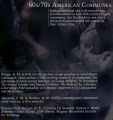

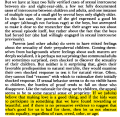

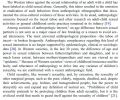




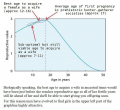




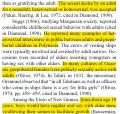
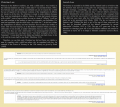
![Rind on historical pederasty throughout the world[1]](/wiki/images/thumb/Historical-Cultural-PederastyRind.jpg/120px-Historical-Cultural-PederastyRind.jpg)









